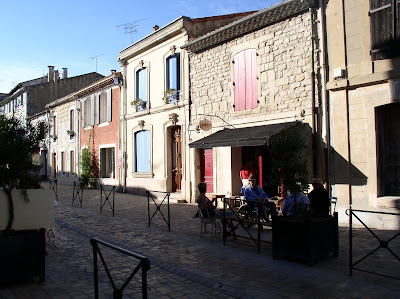This article was first published in "Frequency Magazine" – May 2010.

Degas used photographs, Henry Moore too. There is nothing wrong with referencing photograph as long as you know their limitations and don’t let them enslave you.
Two comments before we start: first, snap your own reference photographs so you don’t infringe any copyright. Secondly, invest some time in knowing your camera and read some books on how to take better photographs.
Limitations of photographs and how to overcome them
Cameras exaggerate both ends of the value range: the very dark and the very light. This is due to the fact that camera are less sensitive to tonal differences than the eye and have a limited range between the brightest value and the darkest value they can capture (also called “dynamic range”). As dark areas appear darker on a photograph, you need to make adjustments and use in your painting a lighter tone than what you see. Another consequence is that small details are often lost in the shadow areas.
There are some practical steps you can take to help yourself. In addition to the normal exposure, shoot an underexposed and an overexposed photograph of the same scene. If you have any software to manipulate digital photographs, you can vary brightness and contrast to get an optimal result. Finally, working from the reference photograph on the computer screen rather than from a print will let you see more details in the shadow areas (Losing shadow details is often aggravated when you print because printers have a limited range in black).
The second potential issue is that camera can misrepresent colours as different films and sensors have different colour bias. Although software can help, the best remedy is to use your reference photographs in conjunction with a sketch or a small study done on site. If you do a sketch on location, you can annotate it with colour indications and record your impressions of the mood of the place.
The third particularity of cameras compared to the eye is that cameras can only focus on a single plane. What is outside of this plane will be out of focus. What we see with our eye (unless your have glasses and don’t wear them) is in focus. When painting, you may want to create focus in a different way from what you see on the photograph.
Practical ways to go beyond photographs
Unless you plan to develop a photorealistic style, you want to put some distance between your reference photograph and the final work. A good way to go beyond the photograph is to draw first a small tonal sketch from the photograph. By doing this, you are getting away from the photographic representation of the scene and going towards the pictorial treatment of the subject.
There are other ways to avoid having your work looking too photographic. Work from small prints (5” x 7”) where you can’t see all the details; work from a Black and White photograph or use a slightly blurry photo.
Another strategy is not to reproduce the photograph as it is. You can change the format (use a landscape format photograph to create a portrait format work). Rather than working from a single reference photograph, combine a series of photographs and use thumbnails to work-out a composite picture based on your selection of photographs.
A good technique is to hide away your reference photograph in the middle of your session, once you have established the main masses, lights and shadow areas and work for some time without your reference photograph. After this “free from photograph” period, you can start referring to it again.
Let me finish by circling back where we started: there is nothing wrong with reference photographs. Now, you know their limitations and the best way to use them while being yourself.

No comments:
Post a Comment